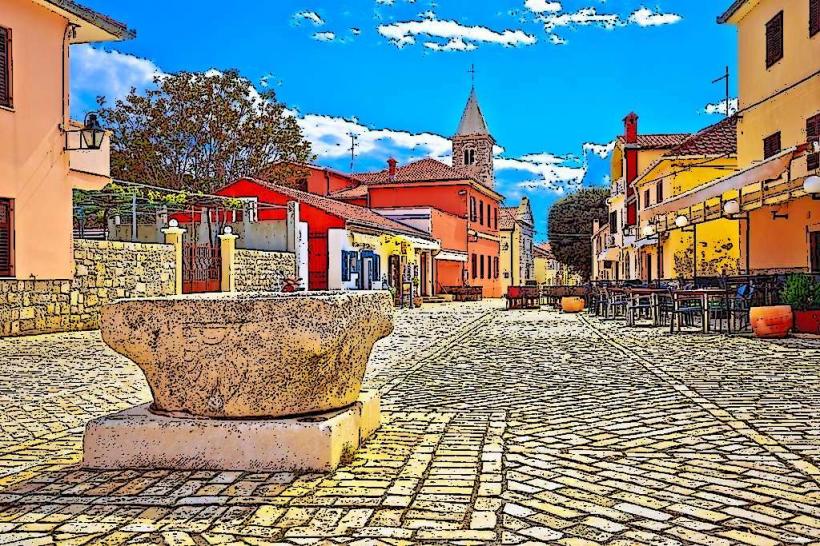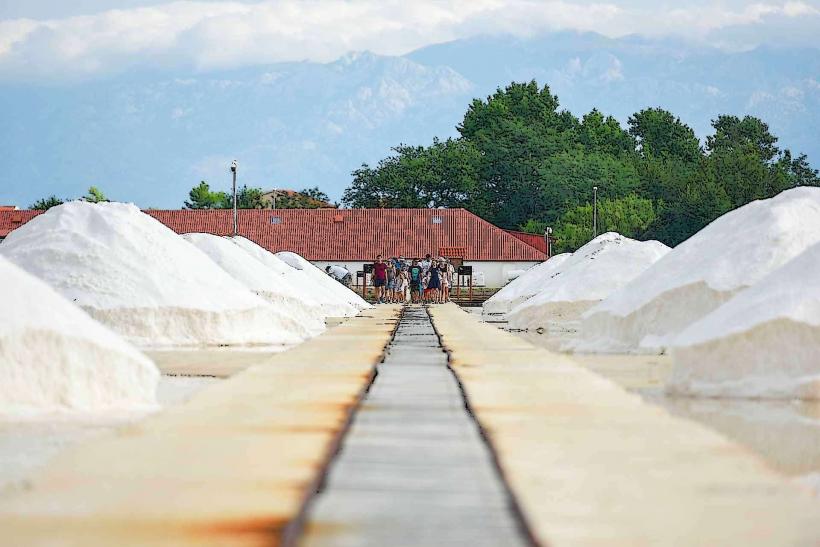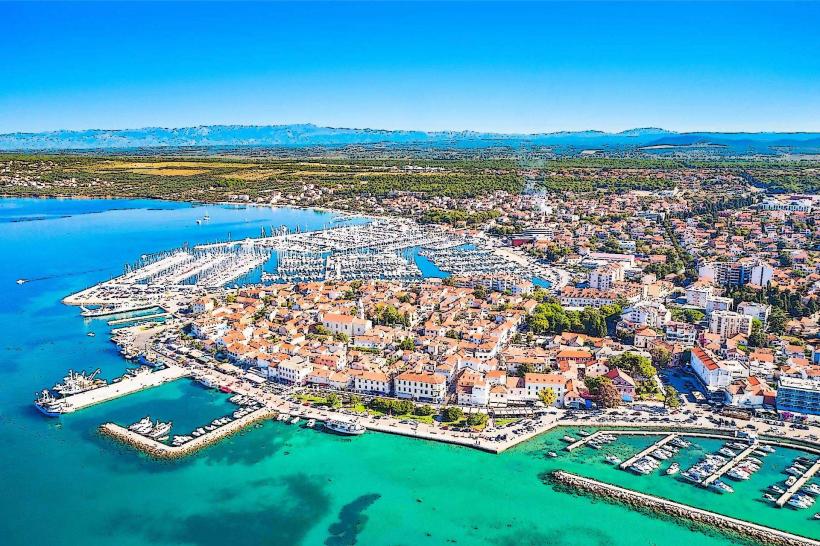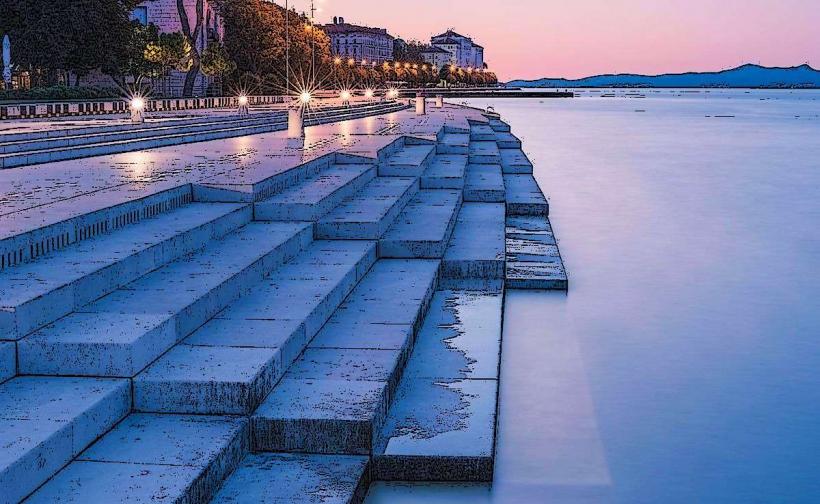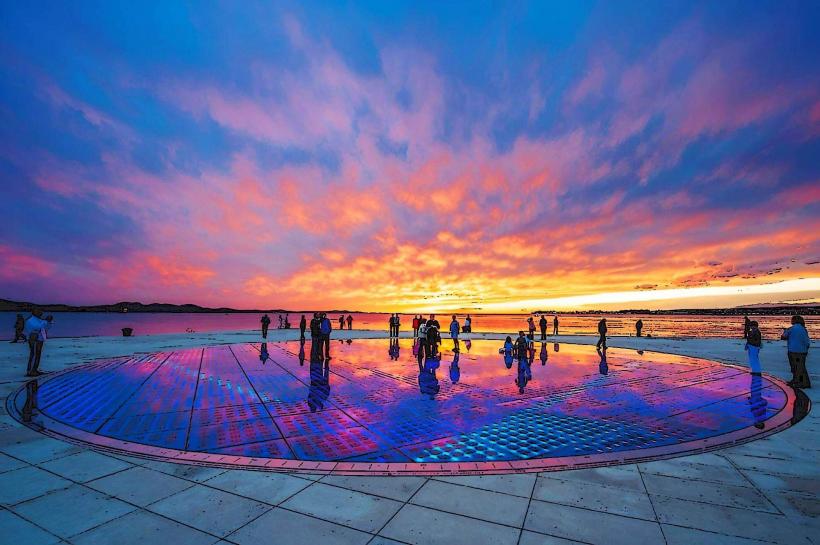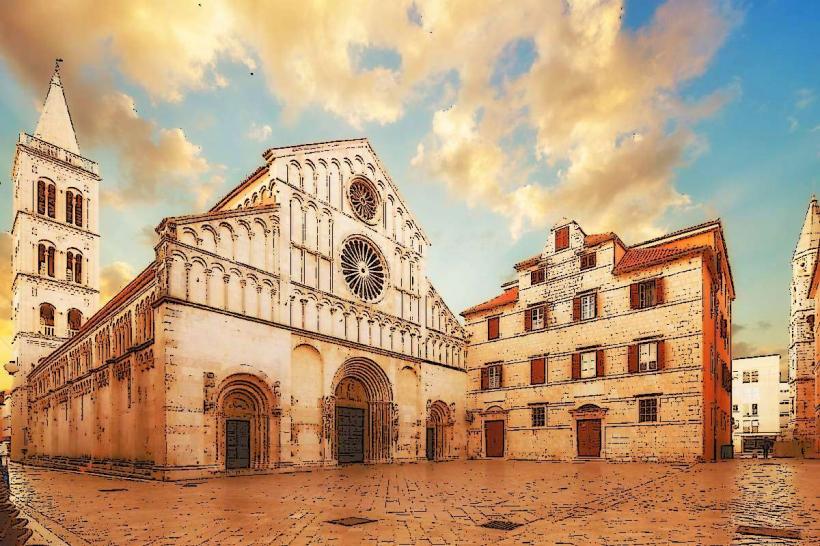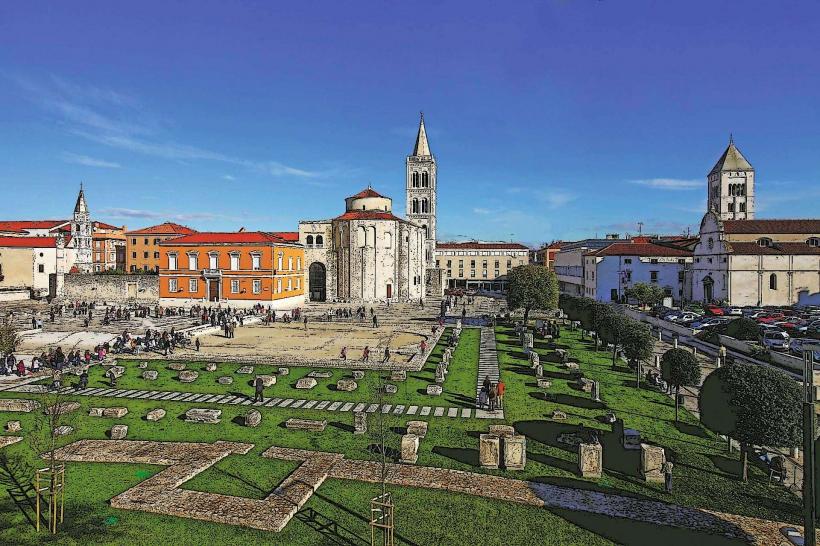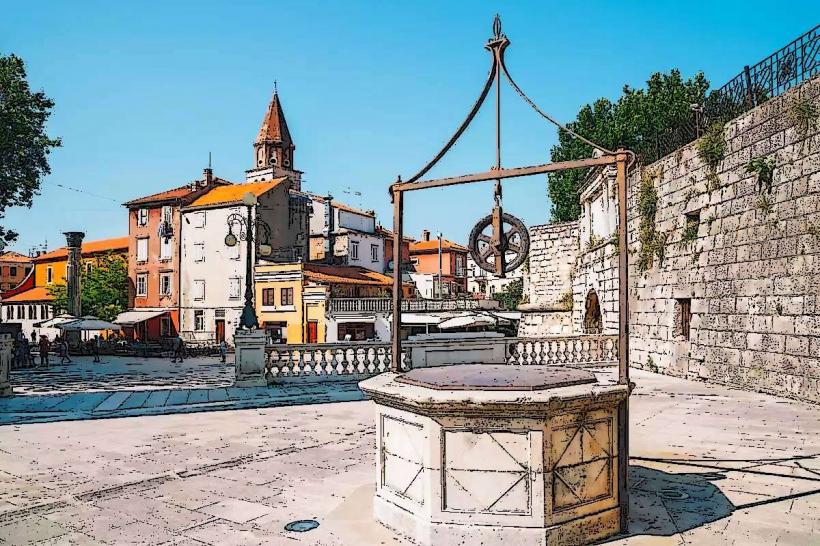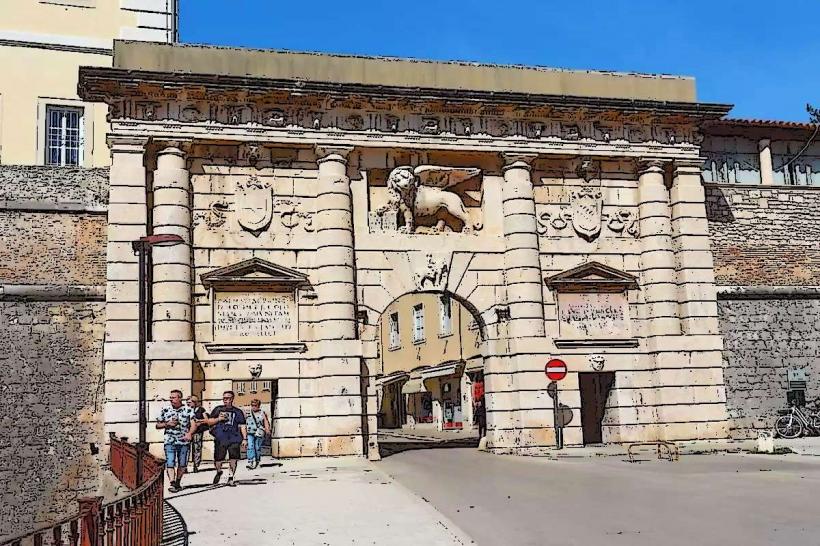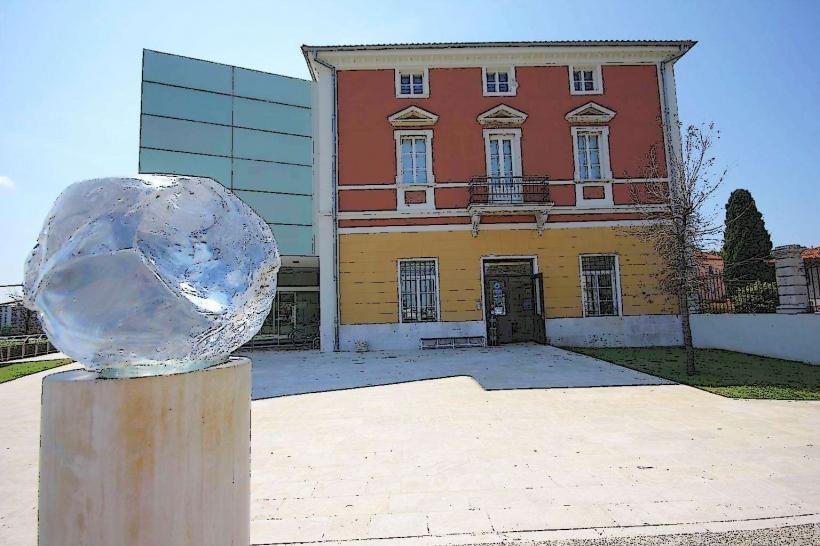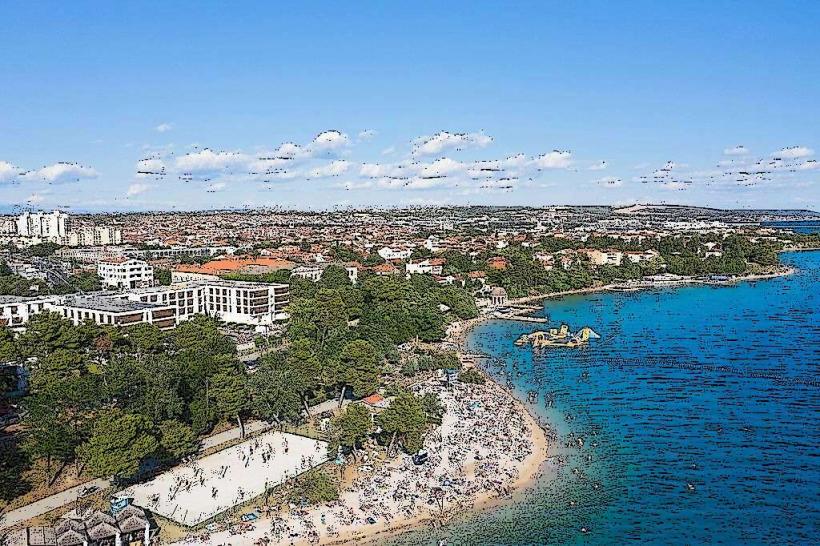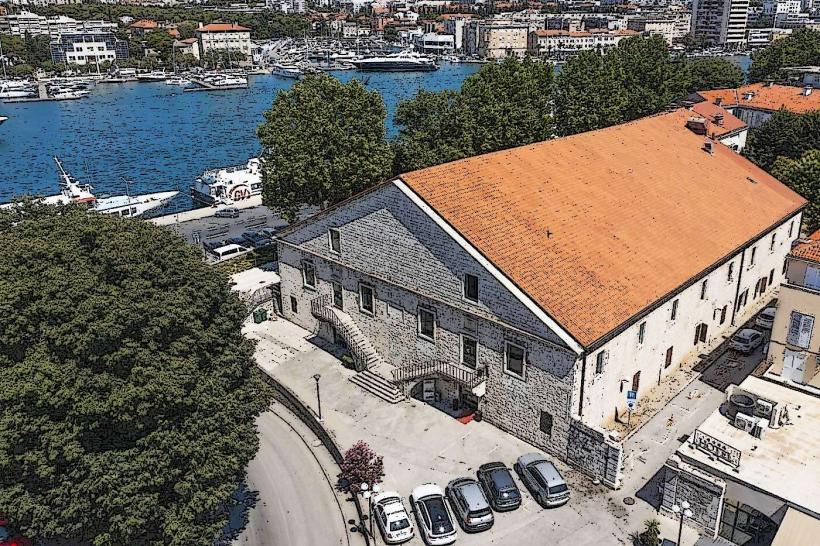Information
Landmark: St. Donatus ChurchCity: Zadar
Country: Croatia
Continent: Europe
St. Donatus Church (Crkva sv. Donata) – Zadar, Croatia
The Church of St. Donatus is one of the most iconic historical landmarks in Zadar, Croatia. Known for its distinctive circular design and remarkable preservation, it is a masterpiece of early medieval architecture and a symbol of the city's rich history. This unique structure stands proudly on the Roman Forum, offering visitors a glimpse into Zadar’s ancient and medieval past.
Historical Background
- Construction: The church was built in the 9th century during the early Middle Ages, commissioned by Donatus of Zadar, who was a bishop and later canonized. It was originally dedicated to the Holy Trinity but later renamed after its founder.
- Architecture: St. Donatus is a prime example of Byzantine-style architecture, with influences from both early Christian and Roman traditions. Its simplicity and grandeur make it one of the finest examples of pre-Romanesque architecture in the region.
- Role in History: The church played a significant role in Zadar’s religious and cultural life. During the Venetian period and later under Ottoman threats, it served various functions, including a defensive purpose. It was deconsecrated in the late Middle Ages and used for secular purposes, such as storing goods.
Architectural Features
- Circular Design: The church’s cylindrical shape, with a central dome and two side apses, is a distinctive feature rarely found in other medieval churches. This design reflects influences from Byzantine and early Roman architecture.
- Roman Forum Integration: The church was constructed directly atop the remains of the Roman Forum, incorporating Roman columns and stonework into its foundation. This blending of ancient and medieval elements adds to its historical value.
- Interior: The interior is unadorned but awe-inspiring due to its massive stone walls, high ceilings, and echoes that enhance its acoustics. The lack of elaborate decoration is typical of pre-Romanesque churches, emphasizing simplicity and function.
- Height and Proportions: The church stands at 27 meters tall, with a diameter of 22 meters, giving it an imposing presence on the Roman Forum.
Cultural and Religious Significance
- Symbol of Zadar: St. Donatus is one of the most recognizable landmarks in Zadar, symbolizing the city’s medieval history and its status as a regional religious center during the early Middle Ages.
- Historical Events: Over the centuries, the church has witnessed numerous historical events, including the city’s transition from Byzantine to Venetian rule.
- Deconsecration: The church ceased to function as a place of worship in the 18th century but has been preserved as a historical monument and cultural venue.
Modern Use
- Cultural Venue: Today, the church is no longer used for religious services but serves as a venue for cultural events, including concerts and exhibitions. Its excellent acoustics make it a popular location for classical music performances, especially during the Musical Evenings in St. Donatus festival.
- Tourist Attraction: Visitors can explore the interior of the church to admire its unique architecture and learn about its fascinating history. The Roman Forum ruins around the church add to the experience, offering insights into Zadar’s ancient past.
Location
- St. Donatus is located in the heart of Zadar’s old town, next to the Roman Forum and close to other major landmarks like the Cathedral of St. Anastasia and the Sea Gate. Its central location makes it a convenient stop for tourists exploring the historic city.
Interesting Facts
- Built on Roman Ruins: The Roman Forum stones and columns integrated into the church were part of an ancient public square dating back to the 1st century BCE.
- Acoustics: The church’s unique architecture provides exceptional acoustics, amplifying sound in a way that captivates listeners during performances.
- Byzantine Influence: Its design reflects Zadar's close ties to the Byzantine Empire during the 9th century.
Visiting Information
- Opening Hours: The church is open to visitors year-round, though hours may vary depending on the season or events.
- Entrance Fee: A small fee is typically required to enter, but visiting the exterior and the Roman Forum is free.
- Guided Tours: Guided tours are available, offering detailed insights into the church’s history and architectural features.
Nearby Attractions
- Roman Forum: The remains of Zadar’s ancient Roman public square surround the church, featuring columns, fragments of temples, and other archaeological finds.
- Cathedral of St. Anastasia: Located nearby, this cathedral is another must-see site, offering breathtaking views from its bell tower.
- People’s Square (Narodni Trg): A vibrant square just a short walk away, lined with cafes and historic buildings.
Conclusion
The Church of St. Donatus is a remarkable testament to Zadar’s rich history, blending ancient Roman foundations with early medieval architecture. Whether you are drawn to its historical significance, its cultural events, or its striking design, St. Donatus is a must-visit destination that provides a unique window into the past of this Adriatic gem.



